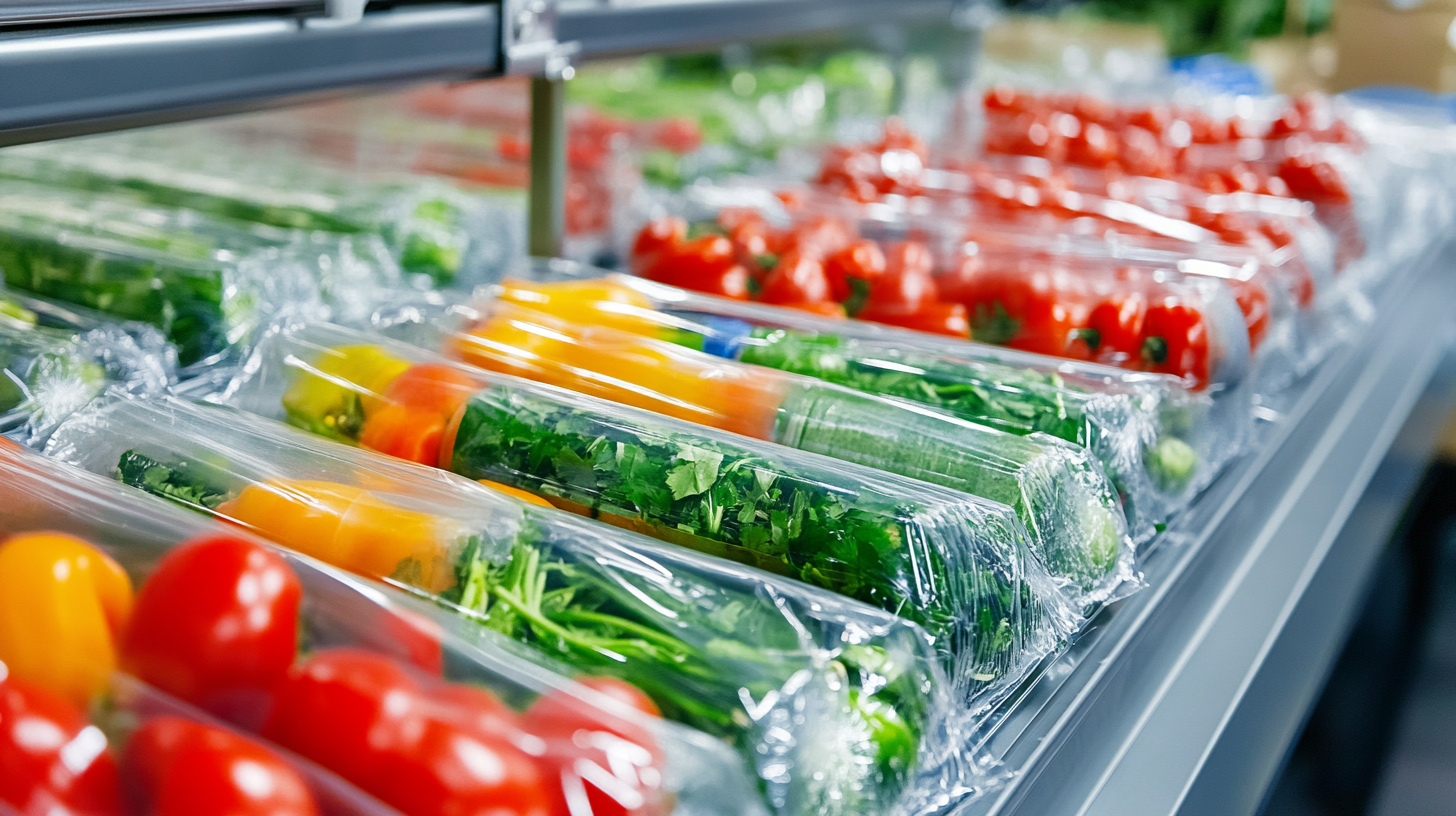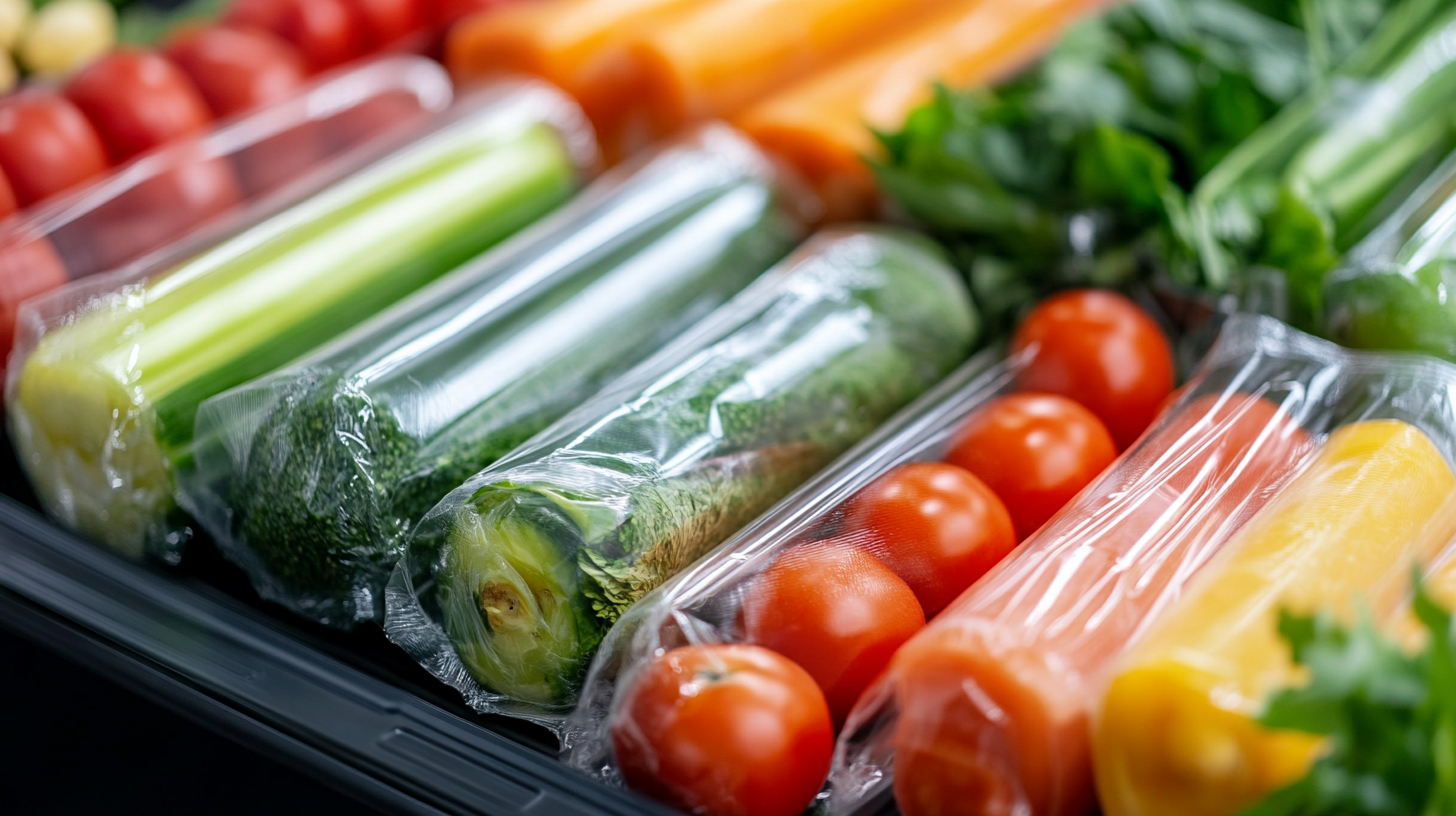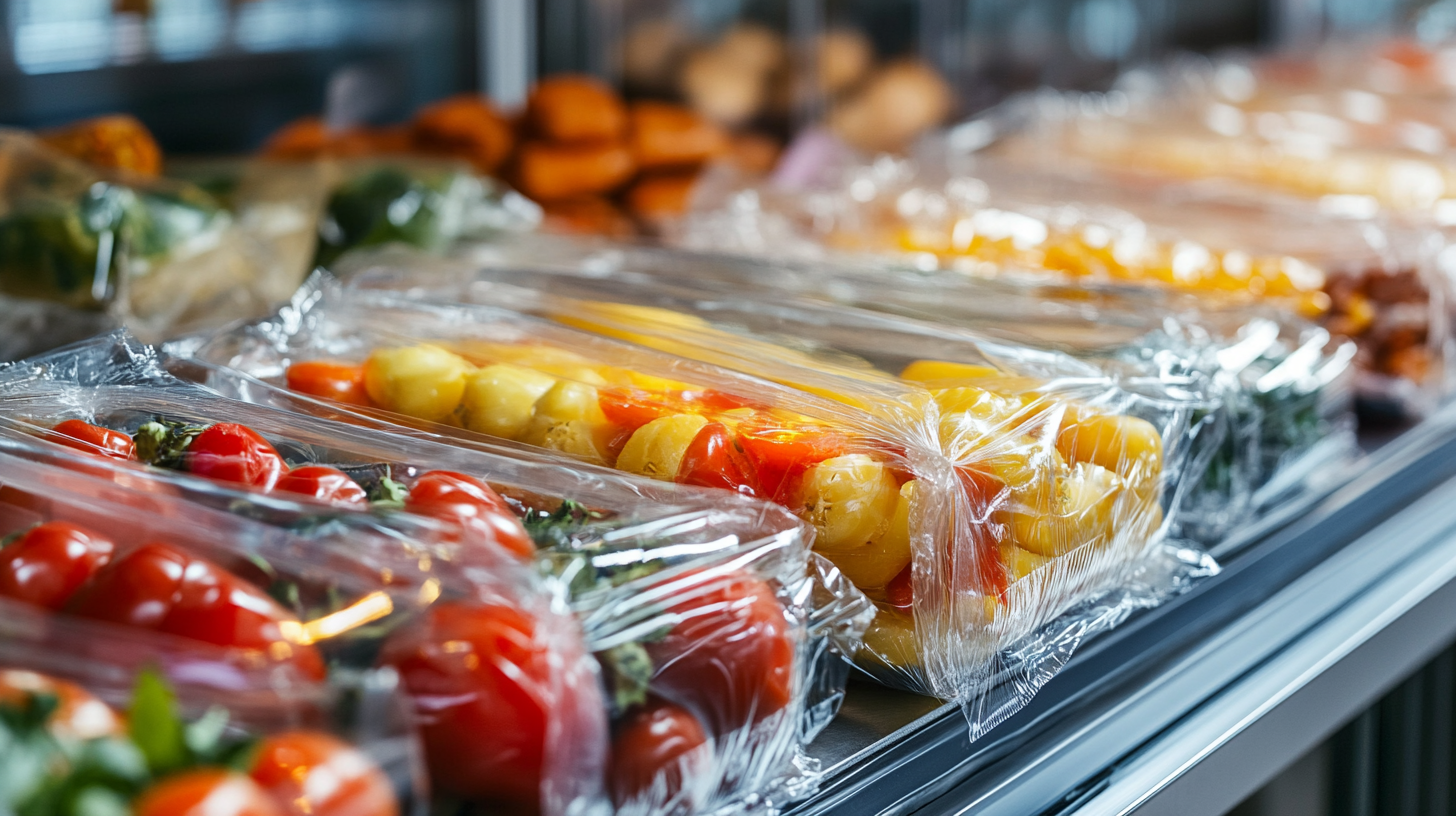Innovative Trends in Food Packaging Plastic Roll Market Driving Sustainability and Efficiency
The Food Packaging Plastic Roll market is undergoing a significant transformation driven by innovative trends aimed at enhancing sustainability and efficiency. According to a report by MarketsandMarkets, the global food packaging market is projected to grow from USD 330 billion in 2020 to USD 429 billion by 2025, with plastic packaging making up a substantial portion of this increase. As consumers become more environmentally conscious, there is a heightened demand for packaging solutions that not only preserve food but also reduce waste and minimize the carbon footprint. Food Packaging Plastic Roll products are at the forefront of this shift, offering versatility and adaptability to meet the evolving needs of the food industry.
In addition, a study by ResearchAndMarkets highlights that the global biodegradable plastic market is expected to reach USD 6.71 billion by 2025, reflecting a growing trend towards sustainable materials. This momentum has prompted many manufacturers to innovate in the Food Packaging Plastic Roll segment, exploring bio-based and recyclable materials that align with consumer preferences. The convergence of sustainability and efficiency in this market is not just a trend but a necessity, as businesses strive to balance cost-effectiveness with eco-friendly practices in their packaging solutions.

Emerging Materials: Biodegradable Alternatives in Food Packaging
The food packaging industry is undergoing a revolutionary transformation as sustainable alternatives to traditional plastics gain momentum. Emerging materials, particularly biodegradable options, are spearheading this change, driven by both consumer demand and environmental necessity. Innovative startups are leading the charge, developing solutions that not only reduce plastic waste but also enhance packaging efficiency. By 2025, many of these companies are poised to reshape packaging with materials that offer both performance and sustainability.
Among these innovations, plant-based materials and edible films stand out as promising contenders for replacement of conventional packaging. Research is increasingly focused on renewable resources like starch and seaweed, which are not only biodegradable but also non-toxic. These materials exhibit excellent film-forming properties and can preserve food quality without contributing to environmental pollution. The recent advancements in biopolymers, fueled by environmental concerns, highlight a significant shift toward renewables that align with regulatory priorities and consumer awareness.
Furthermore, the development of biodegradable alternatives is crucial in fighting plastic pollution. Innovative researchers are even exploring ways to transform agricultural residues, such as sawdust, into packaging materials that mimic the functionality of Styrofoam while being eco-friendly. Such initiatives are indicative of a larger trend in the packaging market, where the commitment to sustainability is essential for a greener future and a cleaner planet. The rising interest in these emerging materials signifies a pivotal moment for the food packaging industry, paving the way for a more sustainable and efficient approach to packaging solutions.

Circular Economy: The Role of Reusable Plastic Rolls in Sustainable Practices
The concept of a circular economy is gaining traction in the food packaging industry, particularly with the rise of reusable plastic rolls. This innovative approach not only addresses the mounting concerns surrounding single-use plastics but also enhances operational efficiencies. According to a report from Smithers Pira, the global flexible packaging market is projected to reach $467 billion by 2024, with a significant portion driven by sustainable practices. The adoption of reusable plastic rolls can significantly contribute to reducing waste and energy consumption in the production and distribution processes.
Reusable plastic rolls are becoming a critical component of sustainable packaging strategies. They help companies to streamline their supply chains by minimizing the need for new materials. Research from the Sustainable Packaging Coalition indicates that companies that implement reusable systems can reduce their packaging waste by up to 70%. Moreover, these rolls can be designed for multiple uses, ensuring that they not only perform efficiently throughout their lifecycle but also contribute to a reduction in carbon emissions associated with manufacturing and disposal.
As the food sector increasingly aligns with sustainability goals, the integration of reusable plastic rolls can stimulate innovation. Industry stakeholders estimate that investment in sustainable packaging solutions will surpass $250 billion by 2026, emphasizing the growing demand for eco-friendly alternatives. By adopting reusable systems, companies can enhance their brand reputation while meeting consumer expectations for responsible practices, ultimately driving a shift towards a more sustainable and efficient food packaging landscape.
Innovative Trends in Food Packaging Plastic Roll Market
Innovative Technologies: Advancements Driving Efficiency in Packaging Production
The food packaging industry is undergoing a significant transformation propelled by innovative technologies that enhance efficiency and sustainability. Notable advancements are being driven by the integration of AI, IoT, blockchain, and robotics, often referred to as Packaging 4.0. These technologies are not only revolutionizing production processes but also ensuring that sustainability becomes a core component of packaging solutions. For instance, a recent report highlights that the pharmaceutical packaging equipment market is projected to grow at a CAGR of 7.5%, reflecting the increasing demand for more efficient and sustainable packaging solutions across various sectors.
Furthermore, the expanded polystyrene market exemplifies the trends in innovative packaging. Valued at $12.06 billion, it is expected to double to $24.77 billion by 2034, driven largely by advancements in technology and a commitment to sustainability. This growth is emblematic of a broader push within the industry to reduce waste and enhance resource efficiency, aligning with global efforts to combat climate change.
The emphasis on sustainability in food packaging not only responds to consumer demand but also contributes to a significant reduction in greenhouse gas emissions across the supply chain. As companies invest in green food processing and smart packaging technologies, we are witnessing a transformative shift that promises to bolster both operational efficiency and environmental responsibility in the food packaging plastic roll market.
Consumer Awareness: The Impact of Eco-Friendly Packaging on Buying Choices
The increasing awareness among consumers about environmental issues has significantly influenced their buying choices, especially in the food packaging sector. According to a recent Nielsen report, 66% of global consumers are willing to pay more for sustainable brands. This trend is particularly pronounced among millennials, where the number jumps to 73%. As a result, companies are not only feeling the pressure to adopt eco-friendly practices but are also recognizing the commercial benefits of doing so.
In the food packaging plastic roll market, sustainability has become a key driver of innovation. Many manufacturers are transitioning to biodegradable materials and incorporating recycled content into their packaging solutions. A report by Smithers Pira suggests that the global market for sustainable packaging will reach $400 billion by 2027, growing at a compound annual growth rate (CAGR) of 5.7%. This rapid growth highlights the urgent need for companies to align with consumer expectations regarding eco-friendliness.
Moreover, studies indicate that consumers are more likely to engage with brands that openly communicate their sustainability initiatives. A survey conducted by Accenture revealed that 83% of consumers believe it is important for companies to design products that are environmentally friendly. As the food packaging industry evolves, businesses are increasingly capitalizing on ethical sourcing and production practices to enhance their brand loyalty and improve their competitive edge. By prioritizing eco-friendly packaging, companies can not only attract environmentally conscious consumers but also contribute to a more sustainable future.
Regulatory Trends: How Legislation is Shaping the Future of Food Packaging
The landscape of food packaging is evolving rapidly, driven by increasing regulatory demands focused on sustainability. Governments worldwide are implementing stringent legislation aimed at reducing plastic waste, encouraging the adoption of biodegradable materials, and promoting recycling. These regulations are not only shaping how manufacturers design their products but are also influencing consumer behavior, as shoppers become more environmentally conscious.
Innovative trends in the food packaging plastic roll market are a direct response to these legislative measures. Companies are investing in research and development to create packaging solutions that utilize less plastic or incorporate recycled materials. For instance, some brands are now exploring plant-based plastic films that meet regulatory requirements while providing the same level of durability and freshness protection as traditional plastics. This shift not only helps in compliance with regulations but also enhances brand loyalty among eco-conscious consumers.
As legislation continues to evolve, it presents both challenges and opportunities for the food packaging industry. Businesses that proactively adapt to these changes by integrating sustainable practices into their operations are likely to gain a competitive edge. By embracing innovative materials and designs in compliance with regulatory trends, companies can significantly improve their market positioning while fostering a greener future for food packaging.


 中国
中国